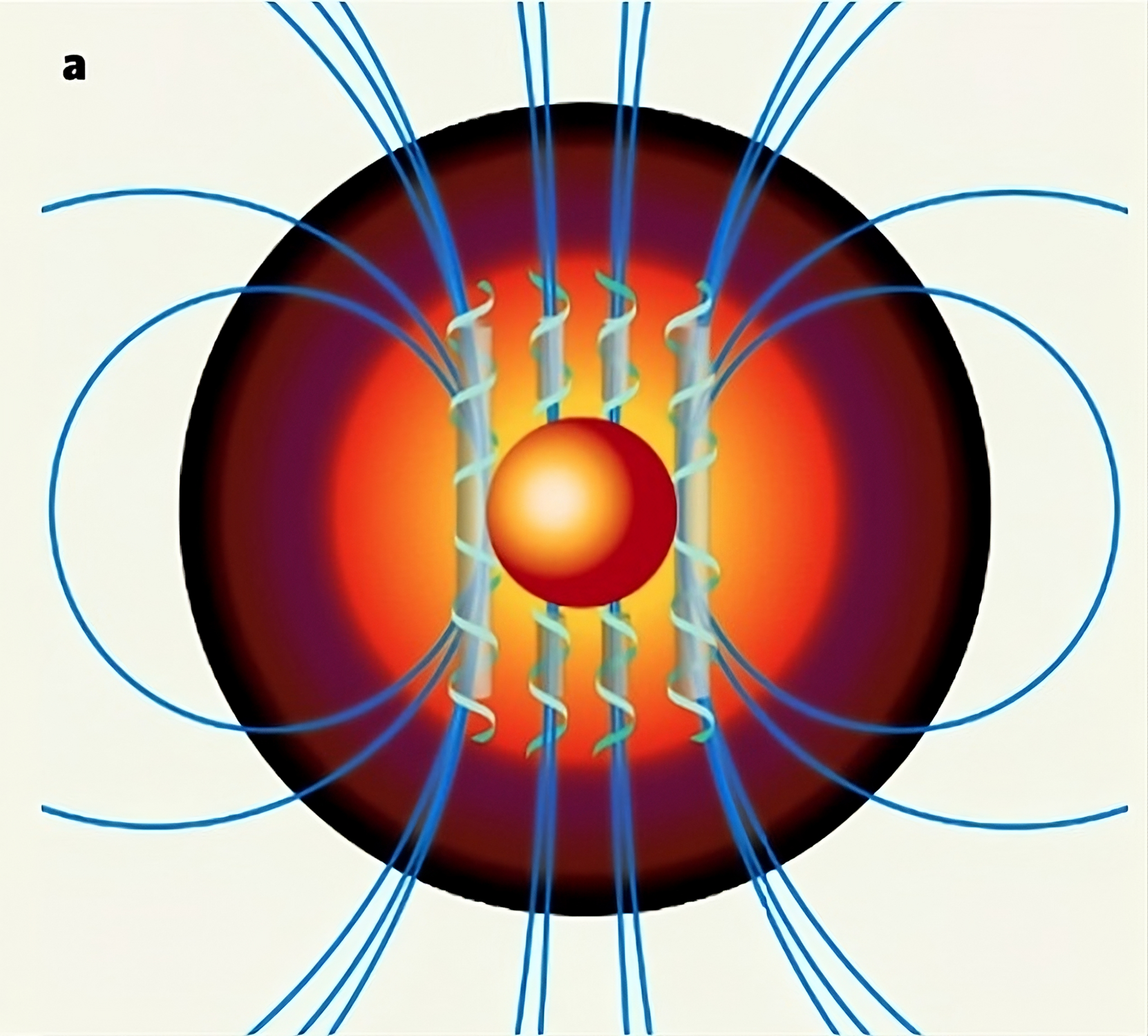Fluid dynamics of the Earth core
The Earth has a liquid layer beneath its rocky mantle. This liquid core spans about half of the Earth's radius (~3,486 km) and is primarily composed of molten iron. Electric currents within the conducting iron generate the geomagnetic field that we observe at the Earth's surface.

The motion of the fluid core also influences the Earth's rotation in several ways. It amplifies the Earth's response to the gravitational torque exerted by the Sun and Moon, known as nutations. It also causes small variations in the length of the day through a series of complex processes involving the exchange of angular momentum at the Core-Mantle Boundary (Rekier et al., 2021).
In this project, our team focuses on the hydrodynamics and hydromagnetic waves excited within the fluid core, governed by the complex interplay of the rotation, buoyancy, and the magnetic field (Triana et al., 2021). A particular emphasis is put on inertial waves, whose motion is dictated by the action of the Coriolis force.
We have shown that the mode of rotation known to geodesists as the Free Core Nutation (FCN) is equivalent to the simplest inertial mode of a freely rotating fluid body known as the Spin-Over mode (Rekier et al., 2020). In a later study, we further clarified the relevance of the Spin-Over mode to rotating planets (Rekier, 2022).
In parallel, we have investigated the effect of the ohmic dissipation caused by the presence of the magnetic field on those modes in more detail (Triana et al., 2021). Along the way, we have been led to take an expected detour into some fundamental aspects of the theory of electromagnetism (Rekier et al., 2023) and their application (Rekier et al., 2025).